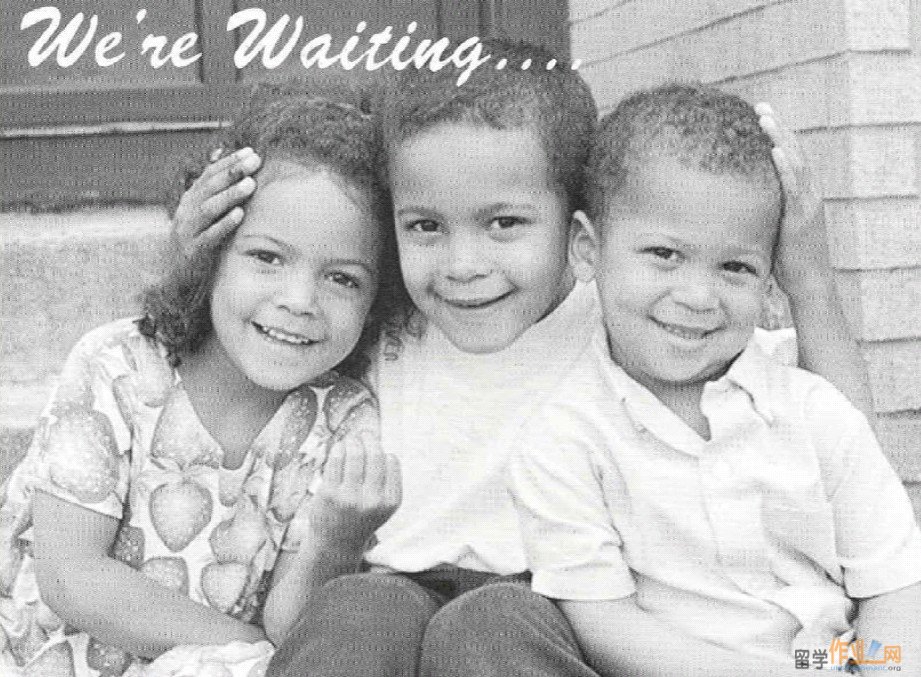|
指导留学生教育学课程作业Learning Styles
“If Children Are Not Learning The Way We Teach,We Need To Teach The Way They Learn”
We all aspire to be good teachers but do we allow all our students to be good learners?
Should teachers adapt to learners, or learners to teachers?
Learning Styles

http://www.ukassignment.org/liuxuezuoyedaixie/daixiehelanzuoye/When I hear, I forget
When I see, I remember
When I do, I learn
Chinese ProverbParadigm
The way you see the world.
(e.g. I am really bad at math)
Paradigm Shift
A change in the way you see the world.Perceptual Illusion
What do YOU see?
Eye Test
FINISHED FILES ARE THE RESULT OF YEARS OF SCIENTIFIC STUDY COMBINED WITH THE EXPERIENCE OF YEARS.
Now count the F's in that sentence. Count
them ONLY ONCE!
How many did you find? 
Gardner claims that individuals possess at least eight independent types of intelligence (2004).
Logico-
Mathematical
Bodily-
Kinesthetic
Linguistic
Naturalist
Intrapersonal
Interpersonal
Musical
Spatial
Eight
Intelligences
What are the Intelligences?
Logico-Mathematical:the use of logical methods and to solve mathematical problems
Spatial:to use and manipulate space
Musical:the ability to create, perform, and appreciate music
Interpersonal:to understand others’ needs, intentions, and motivations
Intrapersonal:the ability to understand one’s own motivations and emotions
Naturalist:the ability to recognize, identify, classify objects
Linguistic:the ability to use language

http://www.ukassignment.org/liuxuezuoyedaixie/daixiehelanzuoye/Bodily-Kinesthetic:the ability to use one’s body
Learning Styles
•
Definition:
•
Various approaches or ways of learning
• It is commonly believed that most people favour some particular method of interacting with, taking in, and processing stimuli or information#p#分页标题#e#
Learning Styles -Categories
Visual
Verbal
Sensory
Intuitive
Active
Reflective
Sequential
Global
Input
Perception
Processing
Understanding
Learning Styles
Learning Styles Visual-Verbal
Verbal 30%
Prefer the spoken
and written word
Visual 70%
Prefer charts, diagrams, and pictures
Learning Styles Visual -Verbal
Visual Learner
Verbal Learner
Instruction
Video Clips
Diagrams & Images
Maps
Lecture
Audio clips
Assignments
Mind Mapping
PowerPoint With Images
Interviews
Seminars
Reports & Speeches
Assessment
Id on Maps
Drawings and Sketches
Read & response
Sound Identification
Verbal tests
Reference
Reference maps
Diagrams/Pictures
Articles
Vide/Audio Clips
Communication
Whiteboard
Chat
Phone
Audio Conferencing
Learning Styles
Visual
• Make up 70% of population
• Ideas, concepts, data and other information are
associated with images and techniques
• Prosper when shown graphs, or graphic organizers, such as webs, concept maps and idea maps
• Use symbols to represent ideas and information
• May have exceptional "photographic memories"
Tips for Visual Learners
• Relate best to written information, notes, diagrams, maps, graphs, flashcards, highlighters, charts, pictures computers.
• Need a quiet place to study.
• When possible have written instructions rather than oral ones.
• Benefit from previewing reading material.
• Write down directions or draw a map.
• Need to see the instructor's facial expressions and body language.
• Concentrate better with clear line of sight to blackboard or visual aids.
Learning Styles
Auditory / Verbal
• Makes up about 30% of population
• Use phrases such as "Sounds good to me," and "It's starting to ring a bell.“
• Learn most effectively by listening to information delivered orally, in lectures, speeches, and oral sessions.
Tips for Auditory Learners
• Listen to music or having different sounds in the background (TV, people talking, etc.) while reading
• Make tapes of class notes and then listen to them.
• Remember details by trying to "hear" previous discussions.
• Participate in class discussions.
• Ask questions and volunteer in class.
• Read assignments out loud.
• Put information into a rhythmic pattern such as a poem or song.
Learning Styles Sensing-Intuitive
Intuitive 42%
Prefer theories and interpretations
of factual information
Sensing 58%Prefer data and facts#p#分页标题#e#
Learning Styles Sensing -Intuitive
Sensing Learner
Intuitive Learner
Instruction
Images
Sounds
Demos
Case Studies
Hypothesis Setting
Assignments
Creation of Demos
Images
Case Studies
Problem Solving
Resolution Building
Assessment
Detail Tests
Audio Tests
Outcome Projections
Reference
Field Trips
Virtual Field Trips
Compare & Contrast
Communication
Conferencing Tools
Group WorkLearning Styles
Tactile/Kinaesthetic
• Learning takes place by the student actually carrying out a physical activity, rather than listening to a lecture or merely watching a demonstration.
• “Natural discovery” learners
• Have realizations through doing, experiencing, touching, moving or being activeTips for Tactual Learners
• Remember by using tools, building models and manipulating things.
• Benefit from hands-on teaching techniques, role-playing and simulations.
• Listen to background music while studying or working
• Learn more effectively when free to move
• Studies effectively laying on floor or bed, fidgeting, tapping fingers or touching objectsLearning Styles Sequential-Global
Global 28%Must see the big pictureBefore the individual pieces fall into place
Sequential 72%
Easily makes linear connections between individual stepsLearning Styles Sequential -Global
Sequential Learner
Global Learner
Instruction
Video Clips
Diagrams & Images
Maps
Lecture
Audio clips
Assignments
Mind Mapping
PowerPoint With Images
Interviews
Seminars
Reports & Speeches
Assessment
Id on Maps
Drawings and Sketches
Read & response
Sound Identification
Verbal tests
Reference
Reference maps
Diagrams/Pictures
Articles
Vide/Audio Clips
Communication
Whiteboard
Chat
Phone
Audio ConferencingLearning Styles -Helping Learners
Visual
Verbal
Sensory
Intuitive
ActiveReflective
Sequential
Global
Input
Perception
Processing
Understanding
VisualVerbal
LinearSweeping
Active
Passive
ConcreteAbstract
Learning Style
Teaching StyleModel 4: McCarthy’s 4MAT system
The four learning styles identified by McCarthy are:
•
Type 1: Innovative Learnersare primarily interested in personal meaning. They need to have reasons for learning--ideally, reasons that connect new information with personal experience and establish that information's usefulness in daily life. Some of the many instructional modes effective with this learner type are cooperative learning, brainstorming, and integration of content areas (e.g., science with social studies, writing with the arts, etc.).#p#分页标题#e#
•
Type 2: Analytic Learnersare primarily interested in acquiring facts in order to deepen their understanding of concepts and processes. They are capable of learning effectively from lectures, and enjoy independent research, analysis of data, and hearing what "the experts" have to say.
•
Type 3: Common Sense Learnersare primarily interested in how things work; they want to "get in and try it." Concrete, experiential learning activities work best for them--using manipulatives, hands-on tasks, kinesthetic experience, etc.
•
Type 4: Dynamic Learnersare primarily interested in self-directed discovery. They rely heavily on their own intuition, and seek to teach both themselves and others. Any type of independent study is effective for these learners. They also enjoy simulations, role play, and games.INDIVIDUAL REFLECTIONS
What?
(What does this mean to you and your educational philosophy)?
So What?
(What implications does this have on your work as a
student teacher)?
Now What?
(What are you going to do with this information)?
(Learning Styles)Activity
Each group will brainstorm to come up with at least two instructional activity/strategies based on a particular learning style.
1. Select someone to scribe
2. Chart your strategies and post them on the wall.
3. Gallery Walk (all participants)
4. Reflective and share (large group)The Learner’s and Teacher’s contribution to the learning process
aWhat do learners contribute to the learning process?
•Past experience
•Individual perception
•New ways of thinking
•New concepts
•Energy and enthusiasm
bHow can teachers/lecturers help the learner?
•Build on learners’ past experience
•Make the learning relevant to the individual
•Identify learner’s preferred learning style
•Highlight new ways of learning/studying
•Motivate the learnerExpanding the t & l repertoire through unconvergence……..
•
SOCIOCULTURALISM
teaching is:learning is:
a joint activitysocial
guiding the conversationassisted performance
helping joint constructionsinteractive and co-
to formconstructive
enacting community valuesself regulation amongst
the group
evaluating shared valuesExpanding the t & l repertoire through unconvergence……..
CONSTRUCTIVISM
teaching is:learning is:
setting challenging taskspersonal understanding
observing and interviewinginterpreting and selecting
supporting learners’ activitiesactive
creating dissonanceconstructive
helping learners to reconsiderreviewing and integratingExpanding the t & l repertoire through unconvergence……..
TRANSMISSION
teaching is:learning is:
giving accurate informationcorrect performance#p#分页标题#e#
sequentialtasks
directcumulative
structuring the environmentreceptive
rewarding performancefrom the outside in
practising and performingExpanding the t & l repertoire through unconvergence……..
METACOGNITION
teaching is:learning is:
explicating expertisemindful engagement
modelling strategiesstrategic management
supporting and assisting reflectionof learning tasks
application across conceptsreflection and self
providing criteria for evaluationmonitoring
adapting, applying and
transferring knowledge
指导课程作业self evaluatingA Moment of Clarity
•
I learned that ……
•
I realized that …….
•
I was pleased that …..
•
I was not aware that ……
|





